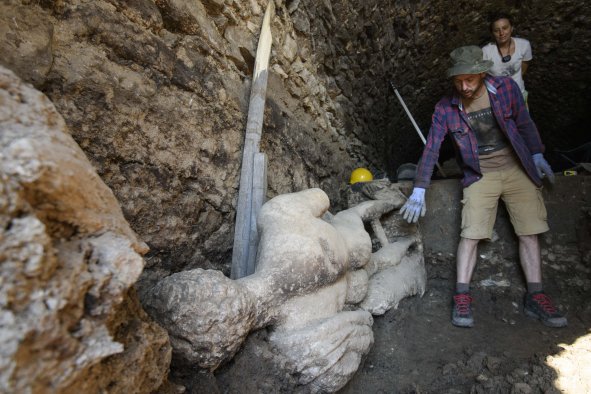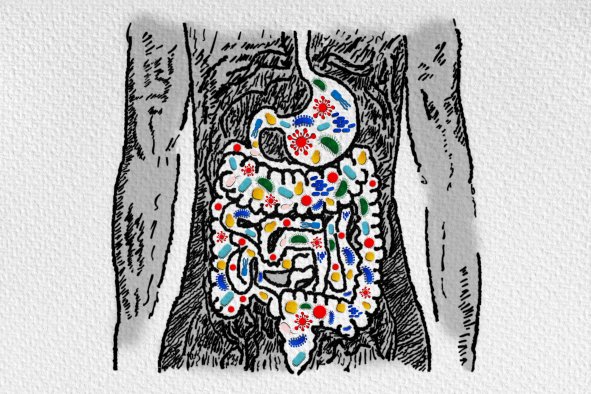Scientists have discovered two new species of hallucinogenic mushrooms in southern Africa.
A team of researchers found that the fungi represent members of the genus (group of species) Psilocybe, although they differ from any of their closest relatives that were already known to science, a paper published in the journal Mycologia.
The Psicolybe genus contains around 140 species, including some of the most well-known and comprehensively studied psychoactive mushrooms. Many members of this group produce a compound known as psilocybin—in addition to similar substances—that produces psychedelic effects when consumed by humans.
Psilocybe mushrooms are found in a wide variety of climates around the world, growing on a host of substrates, such as soil, wood and manure. Despite this, only a handful of the known species are indigenous to Africa—the latest study takes the total to six.
"Although it is not rare to find new African mushrooms, it is relatively rare to find new Psilocybe mushrooms, as these are always of interest to amateur and trained mycologists," Breyten van der Merwe, a mycologist and study author with the Department of Microbiology at Stellenbosch University, South Africa, told Newsweek.
The two new species described for the first time in the study have been named Psilocybe ingeli and Psilocybe maluti respectively.
Psilocybe ingeli was originally found in 2023 growing in pastureland enriched with bovine manure in the KwaZulu-Natal province of South Africa by self-taught citizen mycologist Talan Moult, who is one of the study's authors.
"The diminutive size and hemispheric cap of the mushroom did not match the description of any known South African mushroom," the authors wrote in the study.
Psilocybe maluti, on the other hand, was first documented in South Africa's Free State province in 2021 by a member of the public, Daniella Mulder, who then sent photos to Andrew Killian—one of South Africa's leading citizen mycologists—for identification. In this case, the mushroom was found growing on bovine manure.
The specimen displayed an unusual cap, and it did not match the descriptions of any Psilocybe previously recorded by scientists.
"P. maluti has a unique cap—it's elongated and pointy and never opens up fully like most mushrooms," van der Merwe told Newsweek.
In both cases, the unusual-looking specimens were sent to van der Merwe, who conducted a genetic analysis. These investigations helped confirm the identification of the two new species.
The study authors said there are "undeniably" more southern African species of Psilocybe that have yet to be documented. They also called for more citizen scientists to become involved in searching for them.
"These two species were sent to me by citizen scientists. It would be impossible for a single researcher to cover a fraction of an area these mushroom enthusiasts have access to. This is the only way we will be able to further studies in African mycology," Van der Merwe said in a press release.
After the first specimen of Psilocybe maluti was found, further investigations documented more examples in the Kingdom of Lesotho, a landlocked country encircled by South Africa. This led to the documentation of the mushroom's spiritual use by traditional healers from the Basotho ethnic group.
Although the traditional use of psilocybin-containing mushrooms has been well recorded in regions such as central and southern Mexico, there are very few such reports from Africa, according to the authors.
The researchers sourced anecdotal information on the traditional use of P. maluti through interactions with Basotho healers and elders near the villages of Lejone and Laoti in the Leribe District of northern Lesotho. A traditional Basotho healer also provided firsthand knowledge and experiences.
The indigenous name for P. maluti is "koae-ea-lekhoaba," and the psychoactive mushroom induces a trance-like state. Traditional uses of the mushroom include a variety of recipes, all for different cases.
But of particular interest is a psychedelic brew made by collecting large quantities of P. maluti and steeping the mushrooms in warm water, along with the strong hallucinogenic plant, Boophone distichs, van der Merwe said.
The brew is consumed by the patient, who is then placed in front of a mirror and relays the hallucinations or visions to the healer, who, in turn, interprets them as answers to the patient's spiritual needs.
"This appears to be the only recorded firsthand report of hallucinogenic mushrooms being used traditionally in Africa and the first mention of hallucinogenic mushroom use in Sub-Saharan Africa. The knowledge shared and discussed in this study has been passed down through generations by word of mouth."
Do you have an animal or nature story to share with Newsweek? Do you have a question about mycology? Let us know via science@newsweek.com.
Disclaimer: The copyright of this article belongs to the original author. Reposting this article is solely for the purpose of information dissemination and does not constitute any investment advice. If there is any infringement, please contact us immediately. We will make corrections or deletions as necessary. Thank you.



